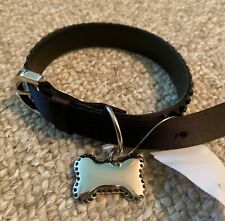A Parent’s Guide to Dog-Bite Prevention

Each year nearly 2.8 million children are bitten by a dog. Most of these bites are not coming from some scary dog that got loose. Sensational stories make headlines, but most dog bites are more commonplace. Half come from the family’s own dog, and another 40 percent come from a friend or neighbor’s dog.
As a dog trainer and a mother of three boys, I want families to love having a dog, but I am perpetually frustrated by the lack of knowledge most parents have about basic dog safety. They seem to be operating under the Disney-esque assumption that a good dog would never bite a child, and their dog is certainly a good dog. Well, I’m sure their dog is a good dog and their kids are good kids, yet every day misunderstandings occur because the parents don’t know how to set everyone up for success. We parents can do much more to prevent our children from being bitten by dogs. But it takes some knowledge.
The best barrier against aggression is a strong social drive. When choosing a dog for your family, look for one that adores people, especially children.A dog that really enjoys kids will give your kids the benefit of the doubt when they step on his tail or fall over him. Even with the best supervision, there will be times when a child hurts a dog. Today, one of my sons kicked off his snow boot, which went flying down the hall and hit the dog. Fortunately for all of us, Gordo didn’t bat an eye.
Several times a month, I am asked to perform behavior assessments of family dogs. One painful part of my job is telling parents when I do not believe their dog has the right temperament to be a safe companion for their children. That breaks my heart, but I feel strongly that I must call the shots as I see them. Sugar-coating or painting a rosy picture might put the family’s child in danger, and I can’t live with that. I often see dogs that could be great family members with some support from the parents. Supervision, along with a basic understanding of dog behavior, is the key.
For example, here is something I bet you don’t know: Dogs don’t like hugs! Oh, I know, your dog loves when your kids hug him. While I believe that dogs can be taught to accept and, in a few cases, even welcome hugs, I also know that hugging is not a normal dog behavior. Think about the last time you saw one dog "hug" another. It wasn’t a gesture of affection, was it? No, it was either mating or a dominance display. Do you really want your dog thinking your child is attempting either of those behaviors?
Children, especially preschoolers, rarely understand the concept of personal space. We parents need to be sure that our dogs get some downtime away from the kids. It’s wearing to have someone following you around all day, even if he means well. My kids know that if the dog goes in his crate, they cannot talk to him or pet him until he chooses to come back out. It gives the dog a private refuge where he’s not expected to be the local celebrity, the center of attention.
Learning a bit about canine body language helps too. There is a set of behaviors-called calming signals-dogs display when they are stressed. These serve two purposes: they are an attempt at self-soothing, akin to thumb sucking, as well as a message to others that the dog would like the situation to defuse. Watchful parents can step in when they see their dog exhibiting these behaviors.
Lip licking
When a dog is a little anxious, he will often quickly stick out his tongue and lick his lips. It’s usually just a fast, little flick. Watch your dog; this is one of the most common signals I see.
Yawning
This is often mistaken for contentment.The dog is surrounded by kids, and he lets out a big yawn. Isn’t that sweet?Nope, it’s a sign that he’s in a little over his head and would appreciate your help.
Shaking off
We’ve all seen dogs shake off when they are wet, but this happens at other times too. I liken it to a reset button on a video game. Time to shake off and start over. It will happen right after something makes the dog uncomfortable, usually as he’s walking away.
Freezing
Watch out! Freezing is one step beyond a calming signal; it’s often a last-ditch attempt to tell you to back off. Dogs typically freeze right before they snap or bite. That may sound obvious, but one of the scariest things I ever saw was when an owner told me, "Lucy loves to have kids hug her. Look how still she is." It was a heart-stopping moment for me. Lucy, thank goodness, did not bite, but she was definitely not enjoying the experience.
Spaying and neutering our pets helps too. Nearly 80 percent of dog bites come from intact males. It’s important not to blame kids for being kids or dogs for being dogs.Let’s be realistic; it’s impossible to control someone else’s behavior 100 percent, be it dog or child. We parents can, however, teach dogs and kids to enjoy each other’s company more by building an understanding of each other’s behavior-and in doing so, we will decrease that scary number of annual dog bites and help ensure that our children are not bitten.













